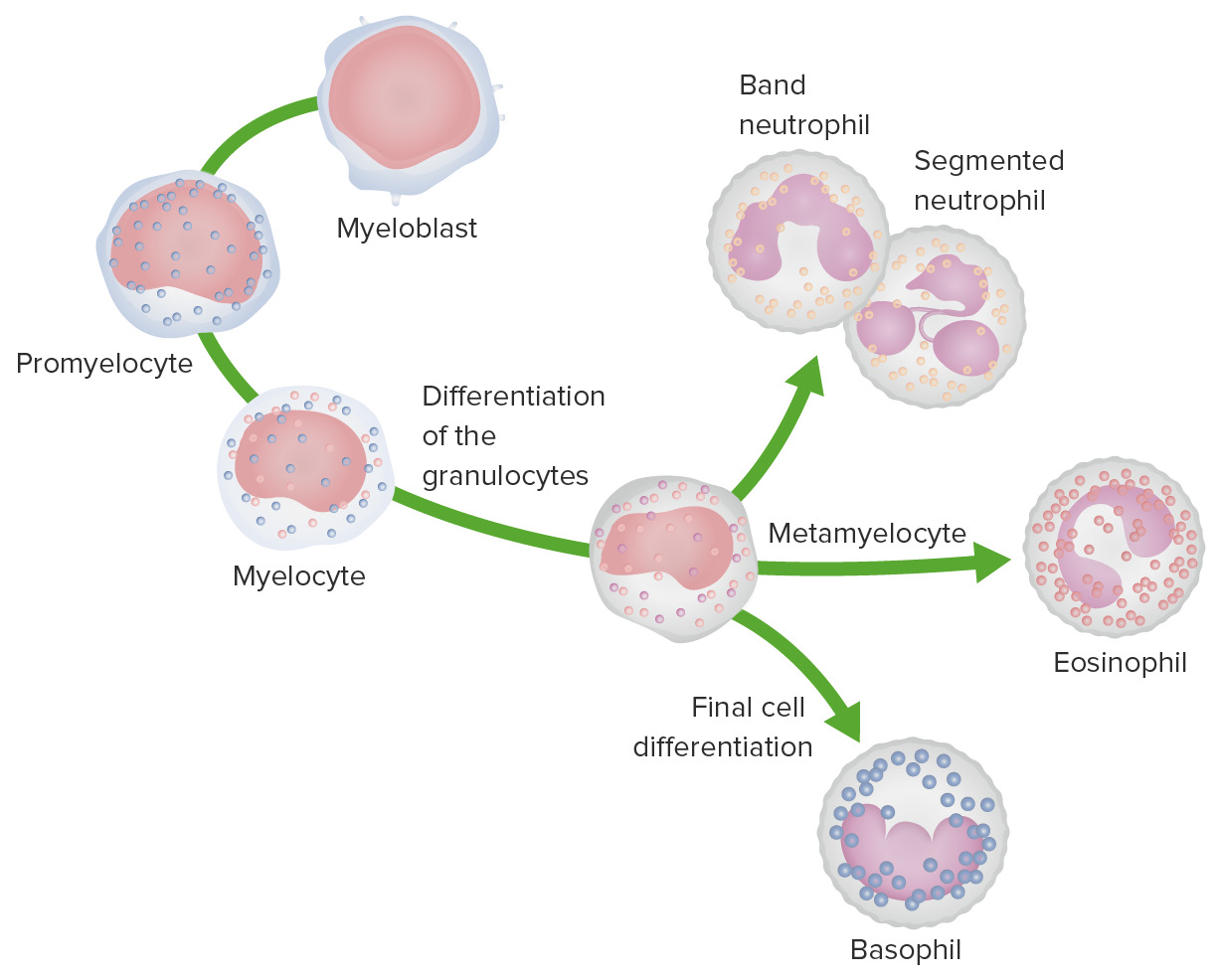Playlist
Show Playlist
Hide Playlist
Lymphadenopathy: Introduction – White Blood Cell Pathology
-
Slides Lymph Nodes.pdf
-
Download Lecture Overview
00:01 Our topic here is WBC pathology. 00:04 The various lymphoid tissue that we shall take a look at in this section include the lymph node. 00:09 Examples clinically of when and how the lymph node will be affected. 00:14 It’s important that we walk through the anatomy of it. 00:18 A few words about the spleen and the thymus, all of this dealing with leukemias and lymphomas in this section in which students tend to confuse quite a bit. 00:28 But by the time we are done, you’ll be well-organized with the WBC pathology. 00:36 At first, we’ll take a look at the normal lymph node. 00:41 Think about the lymph node that we have in our body. 00:44 Think about spread that might take place within the lymph node depending as to what kind of cancer. 00:50 For example, I mentioned a few times that if it was breast cancer, a prognostic indicator there would be the axillary lymph node. 00:57 Whereas if you had a male and there was lymph node involvement with either your testicular cancer or your scrotal cancer. 01:06 If it’s testicular cancer, then the spread will be to the paraaortic. 01:10 We’ll mention these types of spreads when the time is right. 01:13 At this point, it is important for us to identify the following structures. 01:18 I’d like for us to start in the middle. 01:20 And by the middle, I mean the germinal center. 01:23 This germinal center that you’re noticing -- indentify it please – In the middle. 01:28 Responsible for B-cell type of proliferation. 01:31 Quite active. 01:33 Beyond that, you start getting into the cortex, so this will be outer side. 01:37 And we have paracortex. 01:39 The paracortex will be the area in which the T-cells are housed. 01:44 You have the subcapsular sinus and this sinus will become important to us at some point when we talk about a particular WBC pathology known as your Langerhans cell histiocytosis. 01:57 Remember once again that this is a lymph node and so therefore, just like you would have organization of many organs, the cortex will always be the outer. 02:06 The medulla will always be the inner. 02:09 Therefore, in the middle here, we have the medulla. 02:11 And through here, you might find macrophages and company that might be located as eventually making way through what’s known as the afferent and efferent lymphatics. 02:23 Our topic at first is benign lymphadenopathy. 02:27 What does this mean to you? “Hey, doc, it hurts.” Where? In my neck. 02:34 And upon further examination, you’d find erythema in the back of the neck with oral examination. 02:41 This to you is a good news. 02:43 Of course, you’re not going to tell the patient that you’re happy that it’s a painful lymph node. 02:47 But at least, you know most likely that it can be cured and treated And most likely due to bacterial infection. 02:55 My topic is benign lymphadenopathy here and the lymph node will be called tender. 03:00 Acute nonspecific lymphadenitis. 03:03 Inflammation of lymph node characterized by cortical and/or paracortical hyperplasia. 03:08 Acute. 03:11 Usually caused by acute infections and by acute infection, we’ll be having strep or staph being the most common. 03:18 Maybe perhaps causing pharyngitis. 03:23 Cat-scratch disease. 03:25 A cat-scratch disease is rather interesting. 03:27 If you have an immunocompetent patient and gets scratched by a cat and maybe perhaps passes off a bacteria called Bartonella henselae. 03:37 I mentioned immunocompetent whereas you have a patient who is immunocompromised, maybe perhaps HIV positive, completely changes the story, doesn’t it? And this patient who is HIV positive, immunocompromised, the introduction of Bartonella in such a patient results in a skin manifestation known as bacillary angiomatosis. 03:56 It changes a complexion completely. 04:01 Tularaemia. 04:03 Tularaemia will be let’s say your patient that goes into the woods, goes for hunting and then ends up developing an acute infection. 04:11 And so therefore, we talk about rabbits. 04:17 Most frequent presentation would be tender enlarged lymph nodes, what that means is the fact that it actually hurts. 04:23 And if the lymph node hurts, this is a good news for you as a clinician. 04:26 It means that you have quite a bit of arsenal to make sure that you take care of that acute inflammation. 04:36 Whereas if it’s chronic nonspecific lymphadenitis, Usually, case is long-standing and the lymph node here, “Hey, doc." 'I have a lump on my neck.” Does it hurt? "No." Nontender lymphadenopathy. 04:50 Take a look at your differentials. 04:52 Autoimmune diseases. 04:53 HIV. 04:55 Chronic infection. 04:57 Drugs.
About the Lecture
The lecture Lymphadenopathy: Introduction – White Blood Cell Pathology by Carlo Raj, MD is from the course Hematology and Oncology: Foundations.
Included Quiz Questions
What is the most common presentation of benign lymphadenopathy?
- Tender, enlarged lymph node
- Non-tender, enlarged lymph node
- Tender, discolored lymph node
- Non-tender, discolored lymph node
- Shrunken, fibrotic lymph node
Cat scratch disease is caused by which of the following bacteria?
- Bartonella henselae
- Bartonella rochalimae
- Bartonella quintana
- Bartonella vinsonii
- Bartonella bacilliformis
Which of the following conditions relates to tender lymphadenopathy?
- Pharyngitis
- HIV
- Autoimmune diseases
- Drugs
- Cancers
Customer reviews
5,0 of 5 stars
| 5 Stars |
|
5 |
| 4 Stars |
|
0 |
| 3 Stars |
|
0 |
| 2 Stars |
|
0 |
| 1 Star |
|
0 |





